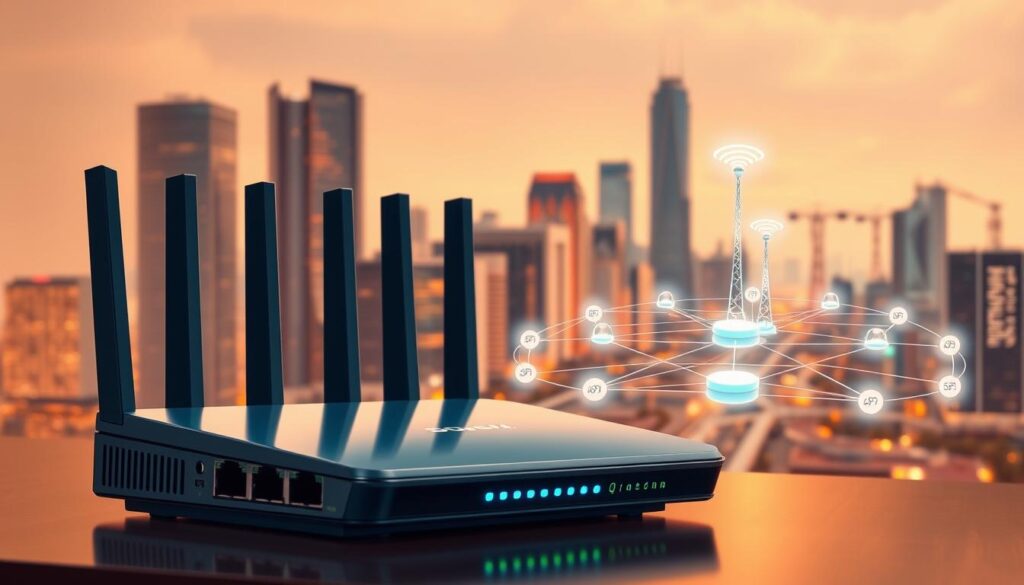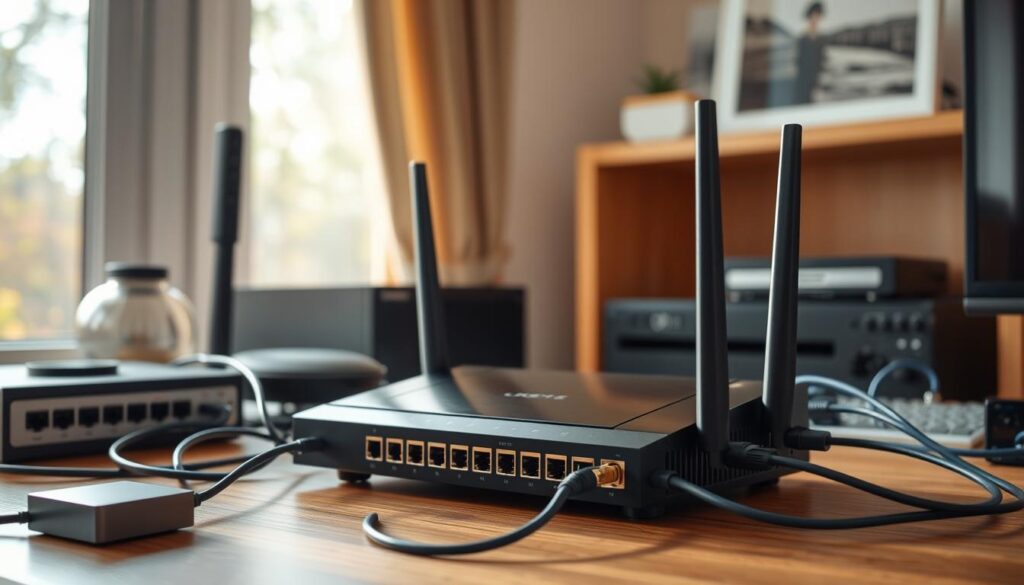Quick, practical help so you can pick the right streaming setup for your home. This short guide focuses on 2025–2026 choices and shows what matters for smooth live and on‑demand viewing.
Top picks up front: SOLID IPTV (30K+ channels, 4K/FHD, free trial, super‑fast support, EPG), IPTVVUK (24K+ channels, 4K/FHD, free trial, super‑fast support, EPG), and G‑IPTV (28K+ channels, 4K/FHD, free trial, super‑fast support, EPG). These providers are listed first for clarity.
UK plans in 2025 often start near £25 per month for high‑speed tiers from BT, Sky, and Virgin Media. For reliable streams aim for at least 25 Mbps per stream, unlimited data, and upload speeds above 10 Mbps.
Watch for ISP actions like traffic shaping, DPI, or activity tracking. Choose an IPTV‑friendly service and you keep steady access, fewer drops, and better performance for your devices.
Key Takeaways
- Guide covers 2025–2026 essentials for smooth streaming and service choices.
- SOLID IPTV, IPTVVUK, and G‑IPTV are the three top recommendations up front.
- Budget plans from ~£25 typically hit entry‑level high speeds from major UK brands.
- Target 25 Mbps per stream and 10 Mbps+ upload for FHD/4K stability.
- Pick plans with no throttling, unlimited data, and strong support to avoid buffering.
- Know your options for privacy and DIY fixes if your ISP limits traffic.
2025-2026 snapshot: IPTV in the UK and the broadband shift to streaming-first
internet protocol television now sits at the heart of how you watch live and on‑demand content in the UK. Major streaming services like Sky Stream and Virgin TV Stream, plus EE/BT IP options, mean you pick a plan for steady streams, not just headline speed.
What matters is simple: speed, stability, and transparent policies. ISPs may use DPI and traffic analysis to manage load, so plans with unlimited data and no throttling are in higher demand.
- You’ll find entry offers from roughly £25 per month in many areas, with higher tiers for multi‑room streaming.
- Providers are pushing IP‑first propositions that bundle apps and reduce setup friction.
- Regional availability will shape your options and which channels or content categories you can stream well.
Pick for consistent performance — look at peak‑time handling, upload consistency, and clear policy terms. That ensures your live channels and on‑demand service stay reliable across devices.
Top IPTV picks for 2025 in the UK
For UK viewers who need wide channel choice and steady playback, these three services stand out. Below are concise details so you can test trials and check compatibility with your app and devices.
SOLID IPTV
Channels: 30K+ | Quality: 4K/FHD | Free Trial: Yes | Support: Super-Fast | EPG: Yes
IPTVVUK
Channels: 24K+ | Quality: 4K/FHD | Free Trial: Yes | Support: Super-Fast | EPG: Yes
G‑IPTV
Channels: 28K+ | Quality: 4K/FHD | Free Trial: Yes | Support: Super-Fast | EPG: Yes
Why these rank first: they combine channel depth, clear quality tiers, and usable trial windows so you can validate connections and app performance before committing. You can test simultaneous viewing and check support response during peak hours. Pairing with a reputable vpn can help with routing or privacy without harming video quality.
| Service | Channels | Quality | Trial | EPG |
|---|---|---|---|---|
| SOLID IPTV | 30K+ | 4K / FHD | Yes | Yes |
| IPTVVUK | 24K+ | 4K / FHD | Yes | Yes |
| G‑IPTV | 28K+ | 4K / FHD | Yes | Yes |
For a deeper comparison and selection tips, see our ultimate guide.
How we chose the best IPTV services for 2025
We tested leading services under real UK peak loads to see which keep streams steady and channels accurate. Our goal was to mirror what you will see during prime time.
Channel range, EPG reliability, video quality, app stability
Channel range was scored for depth and regional variety, not just raw counts. We checked stability during busy hours.
EPG reliability was measured by update cadence and accuracy across large catalogs. Good EPGs make finding shows faster.
Video and app tests covered 1080p and 4K bitrates, motion handling, and buffering. Apps were tested on Fire TV and Android TV for crashes and quick channel zaps.
Customer support speed, trials, pricing transparency
Support was judged by ticket resolution and live chat speed during peak times.
Trials had to mirror paid service quality so you can validate performance. Pricing checks included renewals and refund windows.
| Criterion | What we tested | Why it matters |
|---|---|---|
| Channels | Depth, regional mix, live stability | True variety avoids missing local feeds |
| EPG | Update cadence, accuracy | Faster discovery and reliable schedules |
| App & Video | Crashes, bitrates, buffering | Smoother viewing on common devices |
| Support & Trials | Response times, trial parity | Real validation and quick fixes |
For a side‑by‑side comparison and to compare options, follow our detailed review page.
iptv best internet broadband 2025: what you actually need from your ISP

When you pick a UK isp for streaming, clarity on data caps and traffic rules matters more than raw peak speed. You want a plan that promises unlimited data and no throttling so your connection stays steady during live events.
Prioritize uploads of 10 Mbps or more — that keeps channel switches fast and live feeds responsive. Also look for published peak‑time speeds or service guarantees so you know how the network performs in the evening.
- Choose a service provider with clear no‑throttling policies and transparent traffic management.
- Aim for the least mbps baseline per stream and scale the plan for multiple users and devices.
- Use routers that support QoS, dual‑ or tri‑band Wi‑Fi, and wired Ethernet for your streaming devices.
- Reserve static IPs on your router for boxes to reduce conflicts and improve stability.
Check device support for FHD/4K decoding and modern codecs before you subscribe. If you want a quick provider reference, see the IPTVVUK provider page for trial options and support details that match these requirements.
Broadbands that don’t block IPTV boxes in the UK in 2025
Some UK suppliers now publish clear rules on traffic handling — that helps you pick a non‑restrictive package. Start by checking a provider’s published traffic policy, fair use notes, and peak‑time practices before you commit.
Understanding ISP policies: throttling, traffic shaping, and content filtering
Throttling and traffic shaping can cut speeds for certain streams during busy hours. That often causes dropped channels and long buffer times.
Look for packages that state they do not throttle video or streaming ports. BT, Sky, and Virgin Media are common UK options; check regional availability and exact package terms near ~£25 entry points.
Monitoring methods in 2025: DPI, traffic analysis, and activity tracking
ISPs may use deep packet inspection (DPI), network traffic analysis, and activity tracking as methods to classify and manage flows.
Those methods can impact reliability and privacy. If you value privacy and consistent playback, prioritise transparency in a service’s handling of user data.
What to look for: unlimited data, no throttling, consistent upload speeds
- Unlimited data and explicit no‑throttling clauses.
- Consistent uploads ≥10 Mbps for smooth channel switching and EPG loads.
- Modern router support (Wi‑Fi 6/6E) and easy Ethernet wiring to streaming devices.
- Clear fair‑usage and congestion management policies from the provider.
| What to check | Why it matters | How to confirm |
|---|---|---|
| Unlimited data | Avoid mid‑month caps that stop streams | Read the package terms and T&Cs |
| No throttling | Prevents slowdowns during peak events | Search provider forums and support pages |
| Upload ≥10 Mbps | Maintains quick channel zaps and stability | Run speed tests at your address |
Quick tip: verify availability at your address, compare providers’ customer feedback, and weigh privacy and security features before you sign. Doing so gives you real options that keep channels steady and your viewing private.
The least Mbps for smooth IPTV vs. what to aim for in 2025
Knowing the least Mbps you need helps you avoid buffering and sudden drops when watching live video. Decide on a per‑stream baseline, then add headroom for other users and apps on your home network.
Baselines: 10 Mbps minimum per stream; 25 Mbps+ recommended for 1080p and stability
Minimum rules of thumb: budget at least 10 Mbps for each live stream to reduce start delays and keep SD/HD channels stable.
For reliable 1080p, target 25 Mbps or higher. That level gives smoother channel changes and steadier video quality under load.
- Measure latency and packet loss — aim for under 50 ms and under 1% to cut buffering.
- Prefer Ethernet for primary set‑top boxes and streaming devices to improve your connection.
- Enable QoS on your router so streaming traffic from a service gets priority.
- Run speed tests during peak evening hours to check real performance at your address.
- Scale your plan if several devices or users run channels and apps at once; 4K will need much more bandwidth.
Quick check: use free trials from top providers to confirm that your setup and connection deliver the promised quality before you commit.
UK broadband and TV bundles that pair well with IPTV in 2025
Many UK bundles now centre on streaming boxes that connect over Wi‑Fi rather than coax, so setup is faster and less intrusive for most homes. These packages bundle router, box, and apps so you manage entertainment from one place.
Streaming-first bundles: Sky Stream, Virgin TV Stream, and EE/BT approaches
Sky Stream and Virgin TV Stream focus on app-led delivery via Wi‑Fi boxes. EE and BT offer similar plans that prioritise streaming and phone integration.
Most of these providers include easy plug‑and‑play boxes. That means fewer cables and quicker setup for your devices and connections.
When bundles save money: consolidating services and promos
Bundling often cuts your monthly outlay versus buying services separately. Look for introductory promos that reduce the per month cost or include free months of an app.
- Check contract length: 12‑month deals are common and may include speed boosts or credits.
- Compare whether mobile or landline add‑ons make the total package cheaper.
Content add-ons: sports, cinema, and integrated streaming apps
Decide which plan tier unlocks the content you watch most—sports, cinema, or premium entertainment. Many bundles offer integrated billing for Netflix, Prime Video, or Disney+ so you can manage one payment.
Verify device limits and concurrent streams before you sign so the package fits your household’s viewing options.
Setting up and using IPTV: routers, QoS, and error-proofing your connection

Start by placing your main streaming box on a fixed local address so routine network changes don’t break playback. A few targeted router tweaks and simple checks keep the device and app running cleanly for all users in your home.
Router essentials
Reserve a static IP for your device so DHCP swaps don’t interrupt EPG updates or session tokens. This also makes port forwarding and diagnostics easier.
Enable QoS and prioritise your streaming traffic to keep quality stable when phones, tablets, and downloads compete for bandwidth.
Keep router firmware current to gain performance fixes and security patches that improve long‑term stability.
Quick fixes you can apply now
Clear the app cache and restart the device when channels fail to load or the EPG looks wrong. Update device firmware and the app before deeper troubleshooting.
Check your provider status pages if multiple services misbehave; sometimes outages or regional routing issues are the cause.
Tuning your connection
Test for latency under 50 ms and packet loss below 1% to diagnose buffering. Run evening speed checks to confirm your plan meets the service’s needs.
Use Ethernet or a mesh system to fix Wi‑Fi dead zones, and split 2.4 GHz and 5 GHz SSIDs so your device locks to the faster band. Limit background downloads during live events and place hardware away from interference.
If routing anomalies persist, contact your isp and loop in the service provider if app‑level faults continue. When needed, a reputable vpn can help with routing consistency without harming video quality.
For more setup tips and practical steps, see this concise guide: get the most out of your.
Privacy and security for IPTV users in 2025
Privacy and basic safeguards shape how you watch live channels and on‑demand apps at home.
Why privacy matters: ISP visibility and data protection
ISPs can see unencrypted traffic patterns using DPI and traffic analysis. That reveals which services and streams you access and when.
Protecting your privacy reduces profiling and limits data that a provider logs about your viewing habits.
Using a reputable VPN for encrypted streaming and consistency
A good vpn encrypts traffic and can stabilise routing to your streaming service. Choose a trusted provider and nearby servers to keep speed high.
Test split tunneling if you need some apps to bypass the vpn and preserve throughput for other devices. Review potential speed impact before you rely on it during live events.
Sticking to licensed content and securing your home network
Stick to licensed content to avoid legal risk and unsafe feeds. Also secure your router: use strong passwords, disable WPS, and keep firmware current.
- Avoid sharing credentials and restrict admin access to trusted devices.
- Check service and provider policies so you know what data is logged.
- Reassess settings periodically as policies and network conditions evolve.
For guidance on vpn choices and setup for streaming, see this helpful resource: VPN for streaming.
Workarounds if your ISP interferes with IPTV
Facing provider blocks? Two practical routes—VPN or DNS changes—can get your service working again with different trade‑offs.
VPN: when to use it and what to expect
Why choose a VPN: it encrypts traffic, bypasses ISP restrictions, and boosts privacy for your viewing service.
Trade‑offs: subscription cost and possible speed loss. Pick servers close to you to cut latency and preserve quality.
Consider router‑level VPN if you want every device covered. Use app‑level VPN when only one box needs the tunnel.
DNS changes: a lighter, faster option
Changing DNS can sometimes sidestep blocks without extra monthly fees. It is simple and often restores access quickly.
DNS is less reliable long term and won’t hide traffic from your provider. It may not work if the provider uses deep packet inspection.
Practical steps and test checklist
- Document baseline connection performance before any change.
- Try DNS first for a quick fix; switch to a VPN if the issue persists.
- Choose nearby VPN servers to reduce lag and keep channel switching responsive.
- Monitor stability and have a rollback plan if other services break.
- Avoid stacking multiple tunnels unless strictly needed; extra layers add latency.
- Revisit settings as your provider updates routing or anti‑blocking measures.
Device compatibility: getting IPTV onto your TVs and streaming sticks
Check which streaming devices in your home can run the player apps you plan to use before you install anything.
Common supported hardware: Amazon Fire TV Stick/Cube, Android TV/Google TV, NVIDIA Shield, Apple TV, Samsung Tizen, LG webOS, and Roku. Many let you install apps from official stores or sideload when needed.
Quick checklist to reduce setup issues:
- Map your streaming devices and confirm app availability for each device.
- Use Ethernet or high‑quality Wi‑Fi for your primary device to stabilise playback.
- Keep the app updated and save correct login details for reliable access to channels.
- Match frame rate and dynamic range in device settings to cut judder and motion blur.
- Plan multi‑room connections and ensure your router handles simultaneous streams.
| Platform | App availability | Best connection | Notes |
|---|---|---|---|
| Fire TV / Cube | Wide (store + sideload) | Ethernet adapter or 5 GHz Wi‑Fi | Good for budget set‑top use |
| Android TV / Google TV | Wide (Play Store) | Ethernet or Wi‑Fi 6 | Flexible players and EPG support |
| Apple TV | Selective (App Store) | Wired or 5 GHz Wi‑Fi | Strong codec support, fewer sideload options |
| Roku / Tizen / webOS | App store varies | Ethernet or robust Wi‑Fi | Check native app support or use external box |
Practical tips: keep a backup app or spare device ready if your primary app misbehaves. Also confirm remote shortcuts and quick channel lists to make daily use smoother.
For hardware packing and box options, see our IPTV box guide for deeper setup details.
IPTV vs. streaming TV vs. IPTV-over-broadband: what’s the difference in 2025?
Choosing how to watch in the UK usually comes down to three routes: managed fixed-line TV, app-centric streaming platforms, or direct internet protocol television options.
Internet protocol television refers to video and live channels sent over IP networks, often via dedicated apps or players you install on devices. You may use iptv services alongside other apps on a single box.
Streaming TV platforms such as Sky Stream or Virgin TV Stream package channels and on‑demand libraries into managed apps that run on your devices. They behave like normal apps on smart TVs and sticks.
How IPTV-over-broadband differs
IPTV-over-broadband describes managed TV delivered over fixed lines, historically tied to BT/Openreach networks. It often includes service guarantees and operator support for set-top hardware.
“For many households the choice now is about app ecosystems and device support, not just raw channel counts.”
- Compare channel availability, apps, and device requirements when you decide.
- Evaluate video pipelines: transcoding, buffering strategy, and live latency.
- Match your number of rooms and devices to the service’s simultaneous stream limits.
For a concise comparison of app vs. protocol models see this primer on IPTV vs OTT, or review provider options at IPTVVUK.
Availability and installation notes across the UK
Availability can change street by street, so confirm what options you have at your address before you buy. This first check tells you which services reach your home and what kind of access and setup you’ll get.
Sky and Virgin emphasise self‑install streaming boxes that need only power, HDMI, and Wi‑Fi. That makes setup fast for many homes and avoids engineer fees.
Legacy cable packages may need a technician to fit outlets or upgrades. Check which providers cover your area: Virgin’s cable serves a large share of premises, while BT/EE via Openreach has broader reach.
- Check packages and terms: many plans come with 12‑month commitments and clear rules on early exit or upgrades.
- Plan connections: run Ethernet or move your router closer to the TV for stable 4K/HDR playback on supported devices.
- Consider flats and shared buildings: MDU limits and Wi‑Fi congestion may require mesh systems or wired workarounds.
Quick steps after activation: test evening performance within the cooling‑off period, document baseline speeds and latency, and confirm integrated billing if you want one monthly invoice.
| Install type | Typical requirement | Activation time |
|---|---|---|
| Self‑install streaming box | Power, HDMI, Wi‑Fi | Minutes |
| Legacy cable | Engineer visit, wall outlet | Days to weeks |
| Wired Ethernet setup | Router move or cable run | Hours to a day |
For a quick check of regional availability and to compare local options, see our regional availability guide.
Buying checklist for 2025-2026: providers, plans, features, and budgets
Start your shortlist with SOLID IPTV, IPTVVUK, and G‑IPTV. Match their channels and trial performance to what your household actually watches.
What to check before you commit:
- Confirm that your chosen plan meets speed targets: at least 10 Mbps per stream and 25 Mbps+ for reliable 1080p. Aim for latency under 50 ms and packet loss below 1%.
- Verify evening speeds, upload guarantees, and any throttling rules so service stays steady during peak hours.
- Test app stability and EPG navigation on your primary devices during a trial period.
- Count users and devices to size the plan; check router QoS and wired connections for extra connections.
- Compare month-to-month costs, renewal pricing, and what add-ons (sports, cinema) deliver for your entertainment mix.
- Keep a backup service or app for major events to avoid outages.
| Provider | Channels | Trial | Speed target | Approx. price / month |
|---|---|---|---|---|
| SOLID IPTV | 30K+ | Yes | 25+ Mbps recommended | From ~£25 |
| IPTVVUK | 24K+ | Yes | 25+ Mbps recommended | From ~£25 |
| G‑IPTV | 28K+ | Yes | 25+ Mbps recommended | From ~25 |
Plan your budget for 12 months, factor in promos and any device setup. For a deeper subscription guide see the subscription guide, or check local subscription options before finalising your choice.
Conclusion
Conclusion
In closing, prioritise stability, simple setup, and trials before you commit. Choose one of our top picks — SOLID IPTV, IPTVVUK, or G‑IPTV — for wide channel choice, 4K/FHD quality, and fast support.
Pair your chosen service with an unlimited, no‑throttle plan that delivers roughly 25 Mbps per stream. Prefer streaming‑first bundles if they save money and simplify billing.
Validate performance with the free trials, test access across your devices, and tune your router for minimal buffering. For a quick look at local provider options, see this list of top broadband providers.
Stay flexible: demand and options shift fast, so review your setup each month and keep a fallback service ready.

